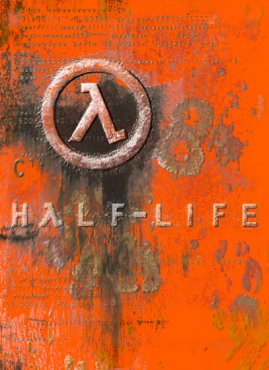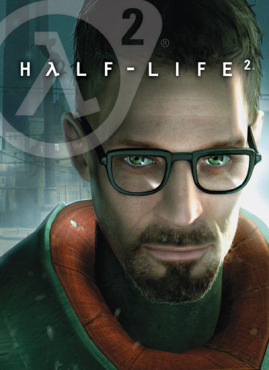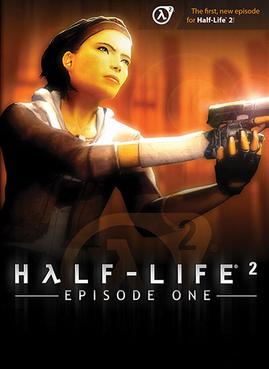
Half-Life is a 1998 first-person shooter (FPS) game developed by Valve Corporation and published by Sierra Studios for Microsoft Windows. It was Valve's debut product and the first game in the Half-Life series. The player assumes the role of Gordon Freeman, a scientist who must escape the Black Mesa Research Facility after it is invaded by aliens following a disastrous scientific experiment. The gameplay consists of combat, exploration, and puzzle-solving.

Half-Life: Opposing Force is an expansion pack for the first-person shooter game Half-Life. It was developed by Gearbox Software and published by Sierra On-Line for Windows on November 19, 1999. Opposing Force was the first expansion for Half-Life and was announced in April 1999. Lead designer Randy Pitchford noted that he believed Gearbox was selected to develop Opposing Force because Valve, the creators of Half-Life, wanted to concentrate on their future projects. Over the course of development, Gearbox brought in a variety of talent from other areas of the video games industry to help bolster various aspects of design.

Half-Life 2 is a 2004 first-person shooter (FPS) game developed and published by Valve Corporation. It was initially published for Microsoft Windows through Valve’s digital distribution service Steam. Like the original Half-Life (1998), Half-Life 2 combines shooting, puzzles, and storytelling, and adds features such as vehicles and physics-based gameplay. The player controls Gordon Freeman as he joins a resistance movement to liberate Earth from the control of the Combine, a multidimensional alien empire.

Gordon Freeman is the silent protagonist of the Half-Life video game series, created by Gabe Newell and designed by Newell and Marc Laidlaw of Valve. His first appearance is in Half-Life. Gordon Freeman is depicted as a bespectacled white man from Seattle, with brown hair and a signature goatee, who graduated from MIT with a PhD in theoretical physics. He was an employee at the fictional Black Mesa Research Facility. Controlled by the player, Gordon is often tasked with using a wide range of weapons and tools to fight alien creatures such as headcrabs, as well as Combine machines and soldiers. Gordon Freeman's character has been well received by critics and gamers, and various gaming websites often consider him to be one of the greatest video game characters of all time, including UGO and GameSpot.

The Black Mesa Research Facility is a fictional underground laboratory complex that serves as the primary setting for the video game Half-Life and its expansions, as well as its remake, Black Mesa. It also features in the wider Half-Life universe, including the Portal series. Located in the New Mexico desert in a decommissioned Cold War missile site, it is the former employer of Half-Life's protagonist, Gordon Freeman, a theoretical physicist, and a competitor of Aperture Science. While the facility ostensibly conducts military-industrial research, its secret experiments into teleportation have caused it to make contact with the alien world of Xen, and its scientists covertly study its life-forms and materials. An "anti-mass spectrometer" experiment conducted on Xen matter causes a Resonance Cascade disaster that allows aliens to invade Earth, and is the catalyst for the events of the series.

Half-Life: Blue Shift is an expansion pack for the first-person shooter video game Half-Life (1998). It was developed by Gearbox Software and published by Sierra On-Line. Blue Shift was the second expansion for Half-Life, originally intended as part of a Dreamcast port of Half-Life. Although the Dreamcast port was cancelled, the Windows version was released as a standalone product on June 12, 2001 for Windows. It was released on Steam on August 24, 2005.

The Combine is a fictional multidimensional empire which serves as the primary antagonistic force in the 2004 video game Half-Life 2 and its subsequent episodes developed and published by Valve Corporation. The Combine consist of organic, synthetic, and heavily mechanized elements. They are encountered throughout Half-Life 2 and its episodic sequels, as well as Half-Life: Alyx, as hostile non-player characters as the player progresses through the games in an effort to overthrow the Combine occupation of Earth.

Alyx Vance is a fictional character from Valve's Half-Life video game series. She is introduced as a non-playable, supporting character in Half-Life 2 (2004), accompanying the player's character, Gordon Freeman, throughout much of the game. She subsequently appears in a similar capacity in Half-Life 2: Episode One (2006) and Episode Two (2007), and as the titular protagonist of the VR game Half-Life: Alyx (2020).

Half-Life: Decay is a multiplayer-only expansion pack for Valve's first-person shooter Half-Life. Developed by Gearbox Software and published by Sierra On-Line, Decay was released as part of the PlayStation 2 version of Half-Life in 2001. It is the third expansion pack for Half-Life, and like its predecessors, Decay returns to the setting and timeline of the original story, albeit portraying the story from the viewpoint of a different set of protagonists: two female scientists working in the Black Mesa Research Facility. Decay is a cooperative multiplayer game, designed to be played by two people working together to pass through the game's levels.

Ravenholm is a fictional ghost town in the first-person shooter game Half-Life 2, developed by Valve Corporation and released in 2004. It serves as the primary setting for the game's sixth chapter, "We Don't Go to Ravenholm", which follows the game's protagonist Gordon Freeman as he journeys through the area as part of an escape from Black Mesa East after it is attacked by Combine forces in order to reach a nearby Resistance outpost. A mining town in Eastern Europe destroyed by a Combine bombardment using headcrabs that turned its residents into hostile zombies, its sole survivor, Father Grigori, offers his assistance to Freeman throughout the level, culminating in a last stand at the town's cemetery.

Half-Life 2: Episode One is a 2006 first-person shooter game developed and published by Valve for Windows. It continues the story of Half-Life 2 (2004); as scientist Gordon Freeman, players must escape City 17 with Gordon's companion Alyx Vance. Like previous Half-Life games, Episode One combines shooting, puzzles and storytelling.

Concerned: The Half-Life and Death of Gordon Frohman is a webcomic by Christopher C. Livingston that parodies the first-person shooter video game Half-Life 2. The comic is illustrated with screenshots of characters posed using Garry's Mod, a tool which allows manipulation of the Source engine used by Half-Life 2. The comic ran from May 2005 to November 2006 and had 205 issues.

Half-Life 2: Episode Two is a 2007 first-person shooter game developed and published by Valve. Following Episode One (2006), it is the second of two shorter episodic games that continue the story of Half-Life 2 (2004). Players control Gordon Freeman, who travels through the mountains surrounding City 17 to a resistance base with his ally Alyx Vance. Like previous games in the series, Episode Two combines shooting, puzzle-solving and narrative elements, but adds expansive environments and less linear sequences.

Half-Life is a series of first-person shooter (FPS) games developed and published by Valve. The games combine shooting combat, puzzles and storytelling.

A gravity gun is a type of device in video games, particularly first-person shooters using physics engines, whereby players can directly manipulate objects in the world, often allowing them to be used as projectiles against hostile characters. The concept was popularized by the gravity gun found in Valve's Half-Life 2, as well as the Temporal Uplink found in Free Radical Design's TimeSplitters: Future Perfect; although a similar concept was used by id Software during the production of the earlier game Doom 3, eventually leading to the introduction of a physics-based weapon in the expansion pack Resurrection of Evil. Later games, such as Portal, BioShock, Crysis, Dead Space, and Garry's Mod have been influenced by the success of these physics-based weapons, adopting their own styles of comparable abilities or weapons.
This is a list of characters in the Half-Life video game series, which comprises Half-Life, Half-Life 2, Half-Life: Alyx, and their respective expansion packs and episodes.

Black Mesa is a 2020 first-person shooter game developed and published by Crowbar Collective. It is a third-party remake of Half-Life (1998) made in the Source game engine. Originally published as a free mod in September 2012, Black Mesa was approved for commercial release by Valve, the developers of Half-Life. The first commercial version was published as an early-access release in May 2015, followed by a full release in March 2020 for Linux and Windows.

Half-Life: Alyx is a 2020 virtual reality (VR) first-person shooter game developed and published by Valve. It was released for Windows and Linux with support for most PC-compatible VR headsets. Set five years before Half-Life 2 (2004), players control Alyx Vance on a mission to seize a superweapon belonging to the alien Combine. Like previous Half-Life games, Alyx incorporates combat, puzzles, exploration and survival horror. Players use VR to interact with the environment and fight enemies, using "gravity gloves" to snatch objects from a distance, similarly to the gravity gun from Half-Life 2.
Half-Life is a series of first-person shooter games developed and published by Valve, beginning with the original Half-Life, released for Windows in 1998. The earliest known canceled Half-Life game dates to 1999. Between Half-Life 2: Episode Two (2007) and Half-Life: Alyx (2020), Valve canceled at least five Half-Life games, including Half-Life 2: Episode Three, a version of Half-Life 3, and games by 2015, Inc., Junction Point Studios and Arkane Studios.




















